
Quick Summary: Estimate at Completion (EAC) forecasts total project cost based on current performance. Delayed updates, scope creep, and bias reduce accuracy. Real-time tracking, standardized inputs, and early intervention improve forecast quality. Predictive intelligence adds early warnings that sharpen decisions and prevent costly surprises.
Projects typically start with clearly defined budgets, promising structure and predictability. Yet, as execution unfolds, unexpected costs inevitably emerge. Unanticipated delays stretch deadlines, resources become strained, and teams find themselves constantly reacting rather than proactively managing. A Project Management Institute (PMI) report reveals that around 50% of all projects exceed their budgets, averaging an overspend of 27%. Clearly, traditional cost forecasting tools often fall short of effectively addressing real-world unpredictability.
By the time leadership recognizes the extent of these overruns, reactive measures often only exacerbate the financial damage. Effective project cost management demands a shift from merely tracking spending to dynamically forecasting and proactively controlling project budgets.
In this context, understanding the true meaning and proper use of Estimate at Completion (EAC) is crucial. This article explores the Estimate at Completion meaning, identifies why traditional methods falter, and outlines how integrating dynamic forecasting approaches can proactively prevent budget overruns.
Want to see how real-time project tracking can prevent cost overruns? Experience it firsthand with TrueProject’s QuickStart—set up in days, not months. Get Started Now.
Understanding Estimate at Completion (EAC): A Dynamic Forecasting Tool
Estimate at Completion (EAC) is a key earned value management (EVM) metric designed to forecast the final cost of a project based on current performance data and real-time conditions. Unlike Budget at Completion (BAC), which represents the initially approved budget, or Estimate to Complete (ETC), which forecasts remaining costs, EAC dynamically adjusts as a project progresses.
The standard EAC formula used in project management is:
𝐸𝐴𝐶=𝐴𝐶+(𝐵𝐴𝐶−𝐸𝑉)𝐶𝑃𝐼
EAC=AC+ CPI(BAC−EV)
Where:
- AC (Actual Cost) - Total money spent on the project to date.
- EV (Earned Value) - Budgeted cost of completed work.
- BAC (Budget at Completion) - Original approved budget.
- CPI (Cost Performance Index) - Cost efficiency metric (EV divided by AC; CPI < 1 indicates over-budget conditions).
Properly utilized, EAC provides a proactive financial snapshot. It empowers project managers to anticipate and control costs, making informed decisions long before the project concludes. However, EAC’s accuracy and utility hinge significantly on the quality and timeliness of input data, an area where traditional practices often stumble.
Common Pitfalls of Traditional Estimate of Completion Approaches
Traditional EAC calculation methods often fall short because they depend heavily on historical performance data and infrequent updates. These conventional methods assume that past performance reliably indicates future results, that risks evolve gradually, and productivity remains stable. In reality, projects rarely unfold under such predictable conditions.
Typical EAC calculations focus primarily on three earned value management metrics:
- Planned Value (PV) - The planned budget for scheduled work.
- Earned Value (EV) - The budgeted cost of work performed.
- Actual Cost (AC) - Real expenses incurred.
Though this approach provides a snapshot of cost performance, it doesn't adequately highlight the underlying reasons for deviations. For instance, if a project consumes 60% of its budget while completing only 50% of its work, the EAC will signal a probable overrun—but won't pinpoint specific causes. Are rising labor costs the issue? Have suppliers increased their prices? Is scope creep occurring quietly? Traditional EAC calculations leave these critical questions unanswered, limiting actionable insights.
Moreover, delayed EAC updates compound the problem. Organizations commonly update EAC monthly, quarterly, or after significant milestones. These intervals create significant blind spots. Issues like early supplier delays or unnoticed scope creep quietly accumulate between updates. By the time the next EAC review takes place, these small incremental problems often transform into significant financial overruns.
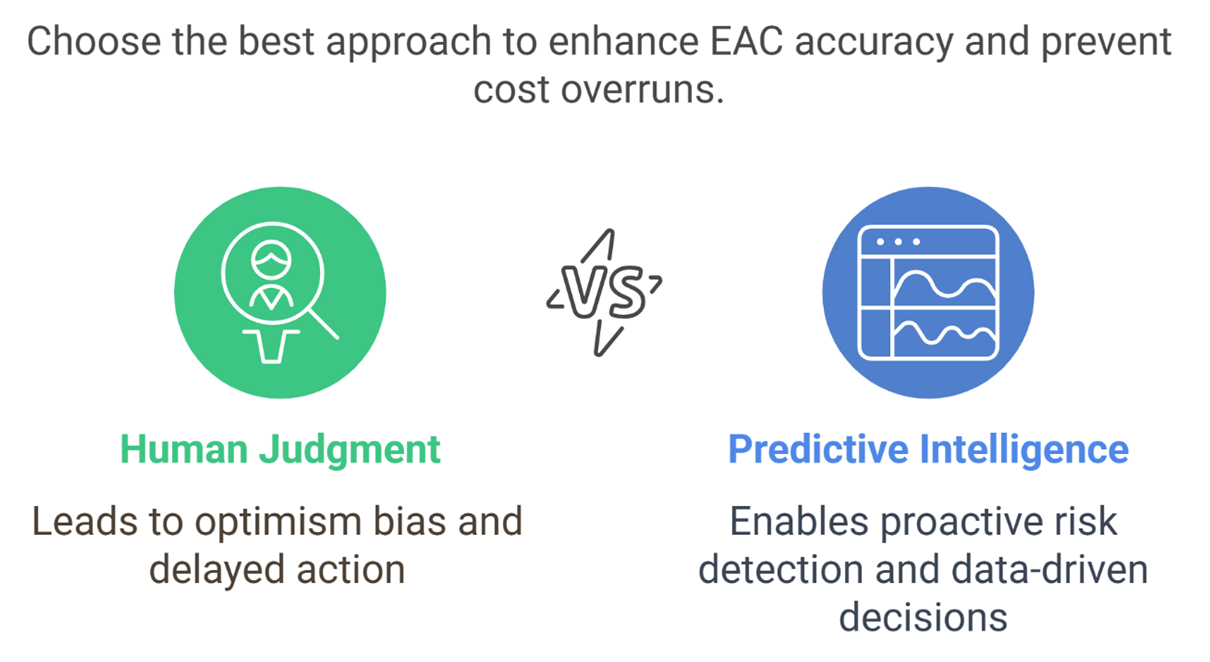
Project budgets should work for you, not against you. Learn how predictive oversight keeps finances under control. Explore More.
How Optimism Bias and Scope Creep Undermine Estimate of Completion Accuracy
Beyond infrequent updates, human factors play a substantial role in distorting the true Estimate at Completion meaning. A prevalent issue among project managers is optimism bias—the tendency to assume teams will naturally "catch up," or temporary setbacks will correct themselves. According to recent PMI insights, 55% of project managers acknowledge that optimism bias significantly contributes to project budget overruns. Rather than addressing early signs of cost deviation proactively, optimistic adjustments postpone necessary interventions, allowing minor issues to escalate into costly crises.
Another critical factor frequently overlooked by traditional EAC methods is scope creep—incremental changes to project scope occurring without formal approval or tracking. Small client-requested enhancements, regulatory adjustments, or subtle design refinements quietly add costs, which go unnoticed by standard EAC methods because they assume all work and associated costs are predefined. As a result, these incremental scope expansions accumulate, exerting substantial financial pressure. By the time traditional EAC models recognize these impacts, resources are already committed, making corrective action challenging and costly.
Effective cost management requires a proactive approach—anticipating optimism bias and monitoring scope creep continuously—to ensure the Estimate at Completion accurately reflects evolving project conditions and potential cost risks.
See how companies are closing the gap between project execution and financial forecasting. Watch TrueProject in action.
Moving from Reactive to Proactive Estimate of Completion Management
Addressing these common pitfalls demands transitioning from reactive tracking to proactive EAC management. Rather than relying solely on historical data and periodic updates, project teams should recalibrate EAC continuously using real-time project data. This proactive recalibration approach significantly improves forecasting accuracy and cost control.
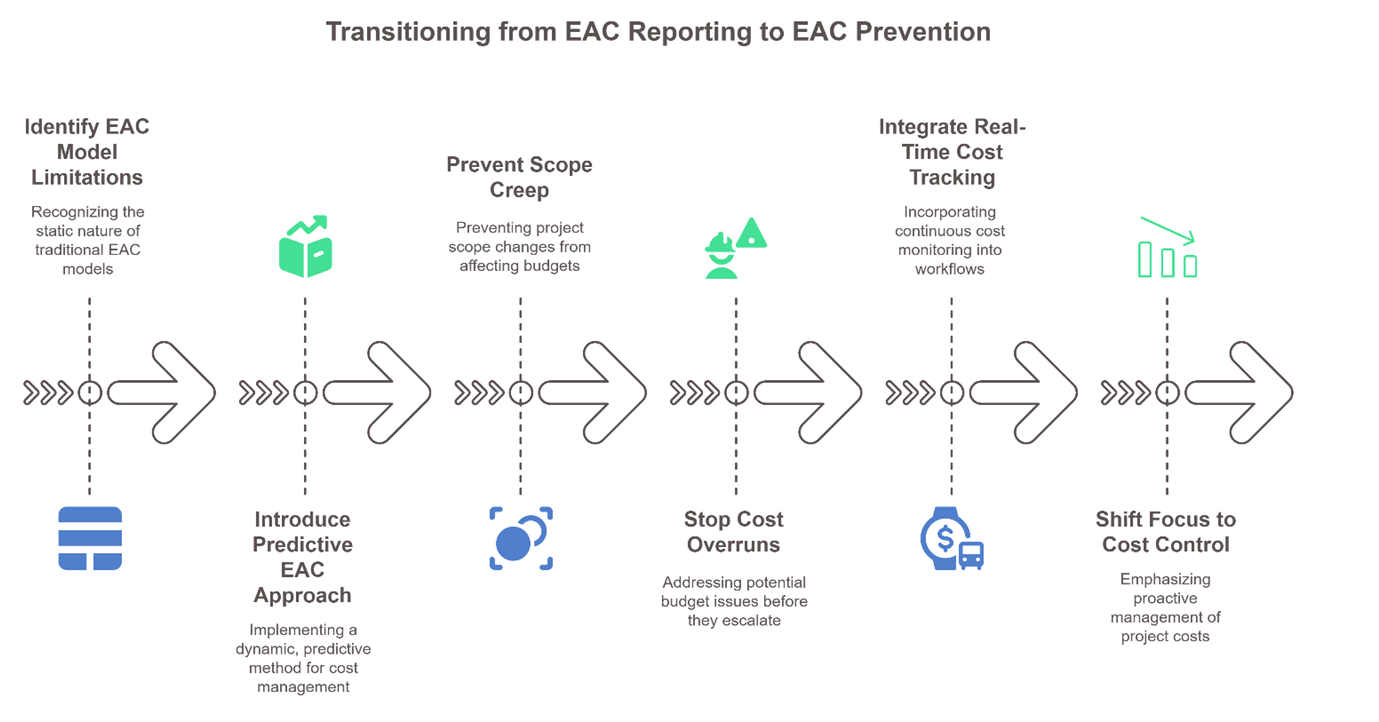
Practical steps for moving to proactive Estimate of Completion management include:
- Real-Time Monitoring - Implement continuous tracking of actual costs (AC), earned value (EV), and evolving project conditions, reducing blind spots between updates.
- Immediate Scope Adjustments - Quickly flagging incremental scope changes ensures EAC immediately reflects accurate, updated project costs, enabling timely interventions.
- Integrated Schedule Analysis - Real-time alignment of cost forecasts with schedule performance, ensuring that delays or extensions are immediately translated into updated financial forecasts.
Recent industry findings indicate that organizations adopting proactive, real-time cost forecasting have achieved up to 15% fewer budget overruns compared to those relying on traditional periodic approaches. Clearly, making EAC management a proactive, real-time practice yields tangible financial benefits by preventing small issues from snowballing into significant cost overruns.
Incorporating Key Financial Metrics into Estimate of Completion for Enhanced Accuracy
To further enhance EAC’s accuracy and predictive capabilities, project teams should incorporate additional key financial metrics beyond the basic earned value calculations. By integrating these metrics, organizations transform EAC into a robust, proactive financial control mechanism that actively guides project management decisions.
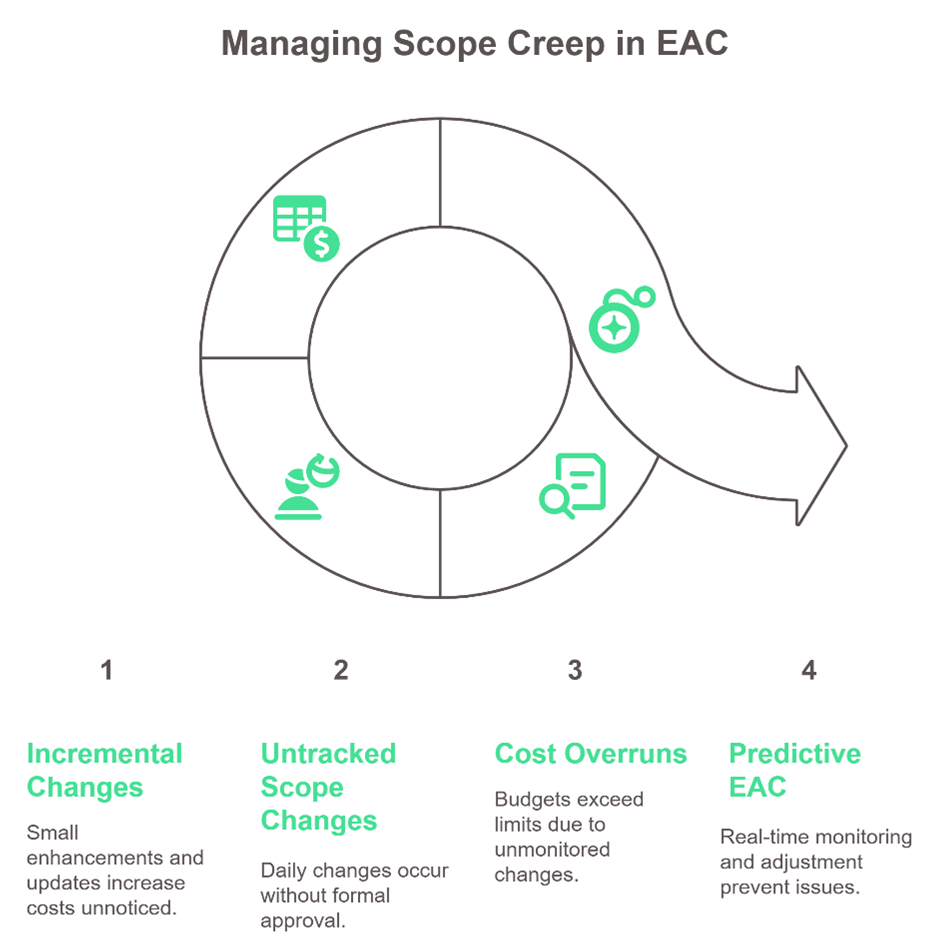
Key Financial Metrics That Significantly Enhance Estimate of Completion Accuracy Include:
- Cost Variance (CV) - Calculated as Earned Value minus Actual Cost (CV = EV - AC), this metric immediately highlights deviations from planned budgets, enabling rapid corrective actions.
- Schedule Performance Index (SPI) - Calculated as Earned Value divided by Planned Value (SPI = EV/PV), SPI clearly links schedule performance to potential budget impacts, proactively signaling when delays may translate into cost escalations.
- Contingency Reserve Utilization - Continuously monitoring how rapidly contingency reserves are consumed provides early indicators of potential future budget stress, enabling strategic resource reallocations before financial buffers are exhausted.
By embedding these metrics into the real-time EAC forecasting process, organizations gain an integrated view of financial health, capable of identifying and responding to emerging cost risks proactively rather than reactively.
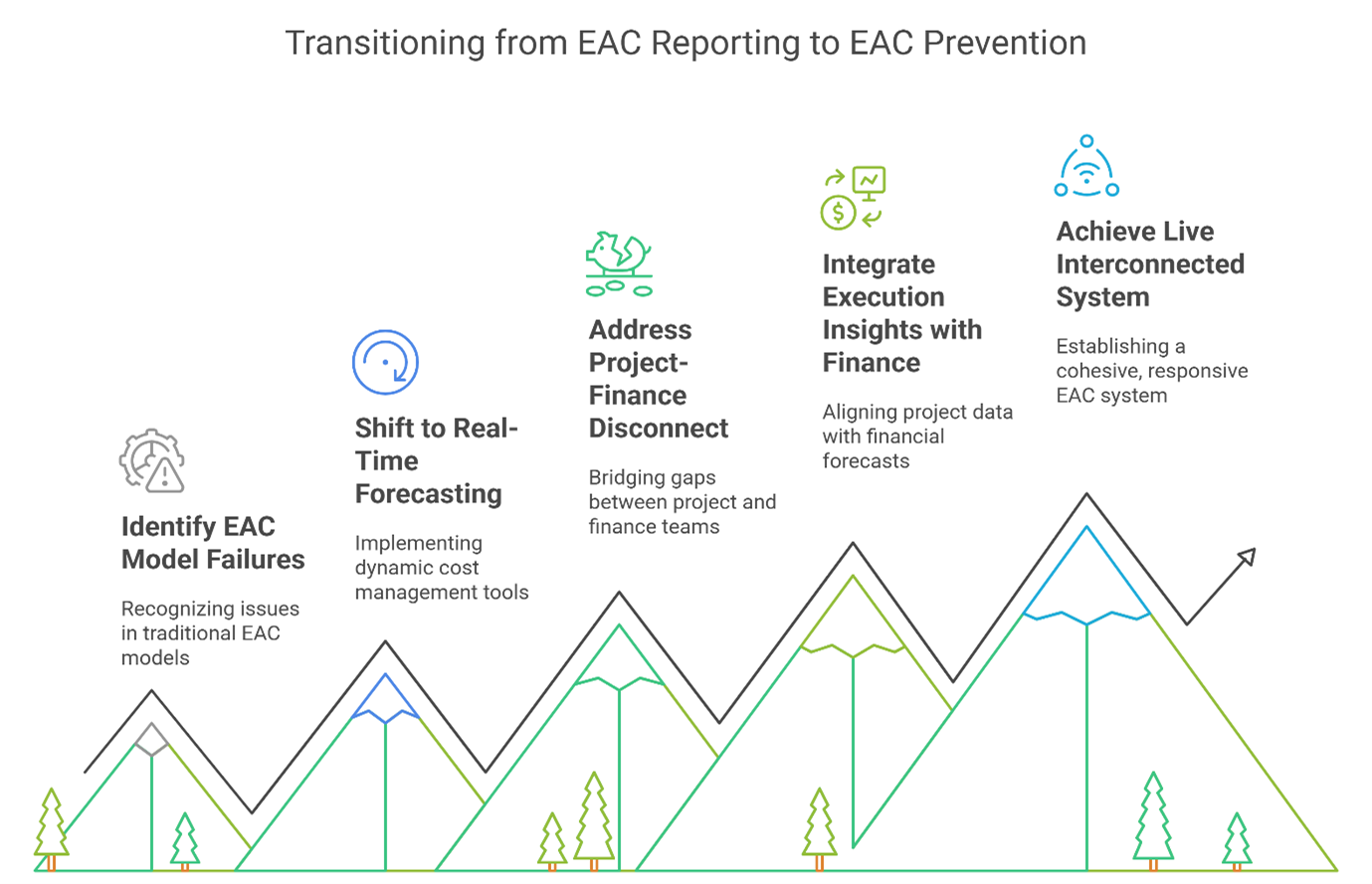
Three Ways to Improve Estimate at Completion
While enhancing the accuracy of Estimate at Completion may sound like a major operational shift, the process can be integrated with minimal disruption. Improving EAC is not about reinventing project management systems—it’s about making smarter use of data and reducing reliance on manual updates and assumptions.
Here are three non-disruptive ways to improve EAC implementation:
- Automate EAC Updates - Replace static spreadsheet-based methods with integrated project management tools that automatically recalculate EAC based on actual performance. Whether using platforms like MS Project, Jira, or others, the key is to ensure EAC updates reflect live data rather than lagging behind milestones.
- Standardize EAC Practices Across Teams - Many project failures stem from inconsistency. Standardizing how EAC is calculated, updated, and reviewed across teams ensures that leadership gets reliable, comparable insights from all projects.
- Empower Teams with Financial Insight Training - Equip project managers with the ability to interpret EAC and related financial indicators, encouraging them to flag anomalies and make proactive adjustments rather than passively waiting for financial reviews.
This implementation model avoids disrupting workflows while enhancing transparency, accountability, and accuracy in cost forecasting.
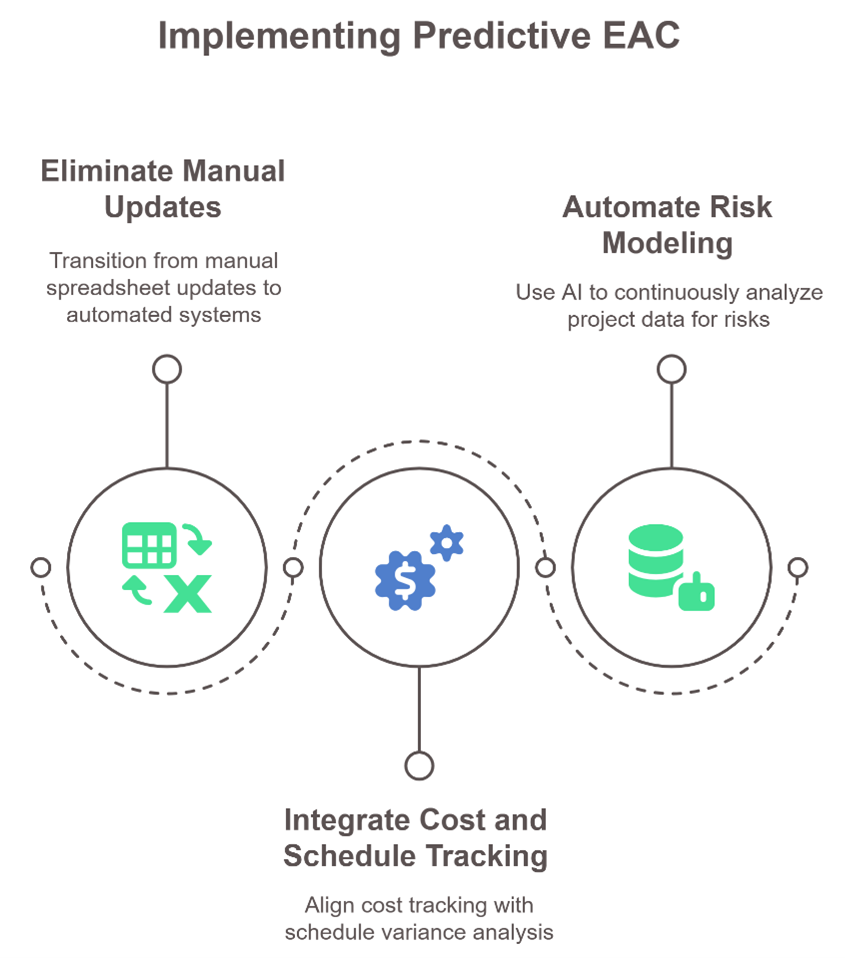
The Role of Predictive Intelligence in Estimate at Completion
Predictive intelligence (PI) should not replace the core EAC model, but rather complement it. When integrated thoughtfully, by layering historical performance, real-time execution signals, team dynamics, governance compliance data, and evolving stakeholder inputs onto traditional EAC calculations, leaders gain a living forecast — one that sharpens decision-making before risks turn into costs.
However, the goal is not to overwhelm the EAC process with complex AI models. Instead, organizations can benefit from using predictive intelligence in the following strategic ways:
- Early Risk Detection - Identify potential overruns based on subtle trends in schedule delays or resource consumption patterns before they become critical.
- Objectivity Over Assumption - Minimize subjective decision-making by using data-backed risk alerts to inform EAC recalibrations.
- Enhanced Responsiveness - Automate alerts when thresholds are exceeded (e.g., CPI < 0.9 or reserve burn rate spikes), prompting timely intervention.
While only 21% of project professionals currently use AI regularly, 82% of senior executives believe AI will fundamentally improve project delivery within the next five years (PMI Pulse of the Profession, 2023). Strategic adoption now gives organizations a forward-looking advantage.
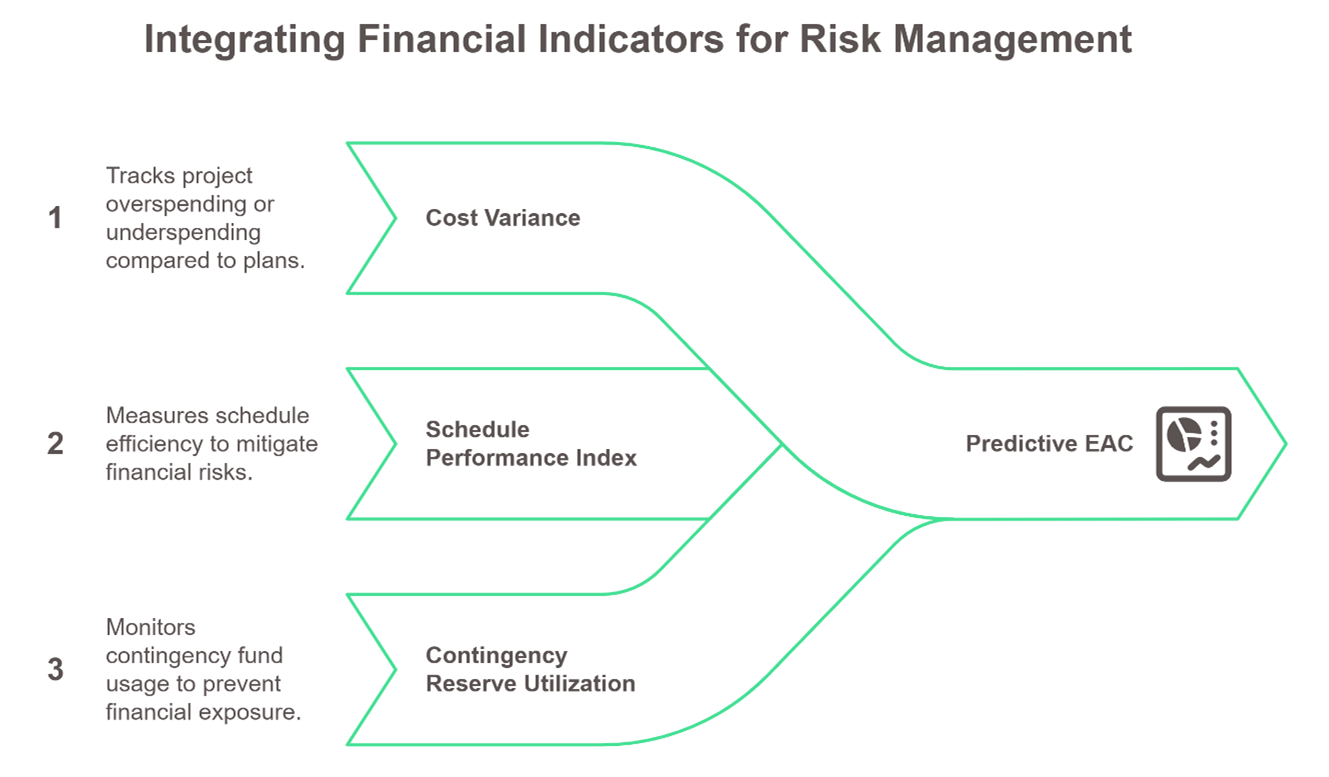
Conclusion: Redefining the Estimate at Completion Meaning for Today’s Projects
The true Estimate at Completion (EAC) meaning isn’t just about projecting a final number—it’s about giving project teams the visibility they need to drive better decisions across the project lifecycle. Left unmanaged, EAC simply reports the damage. But when supported by dynamic, real-time project monitoring, it becomes a critical control point—allowing teams to detect issues early and take corrective action before costs spiral. By addressing traditional EAC pitfalls—like delayed updates, optimism bias, and static assumptions—and enhancing monitoring with real-time metrics and predictive insights, organizations gain a powerful edge.
This proactive discipline doesn’t just reduce the risk of cost overruns—it builds trust, transparency, and stakeholder confidence.
In an environment where $2 trillion is lost annually due to poor project performance (Standish Group, CHAOS Report), strengthening cost control through refined project monitoring and smarter EAC oversight isn’t optional—it’s mission-critical.
The future of project budgeting and cost control belongs to those who refuse to be blindsided. Because in project execution, control isn’t about tracking numbers—it’s about steering outcomes with clarity, agility, and foresight.
That’s where TrueProject, a KPI-based predictive SaaS solution for project management changes the game. It provides an early warning system for your budget—built to eliminate surprises, expose hidden risks, and keep costs in check before they spiral. With AI-driven oversight, real-time recalibrations, and automated governance, TrueProject transforms EAC from a passive metric into a command center for financial control. It doesn’t just highlight risks—it gives you the intelligence to prevent them, ensuring every decision is backed by real-time accuracy.
Discover how TrueProject helps teams move from financial firefighting to proactive cost control. Book a Live Demo to experience it firsthand.
FAQs
- What is the best way to keep the Estimate at Completion accurate?
Use real-time data updates instead of static schedules. Link EAC to live inputs like costs, schedules, and scope changes to reflect actual project conditions accurately. - Is EAC the same as a budget forecast?
No. EAC adjusts dynamically based on project performance, while a budget forecast is often fixed and updated less frequently. - Can EAC be used in agile projects?
Yes. In agile projects, EAC can be updated using sprint data, burn-down charts, and actual costs to forecast total project expenses. - How does EAC help stakeholder communication?
EAC gives stakeholders a clear, data-driven view of project cost health, enabling transparent conversations around risks, funding, and scope changes.





